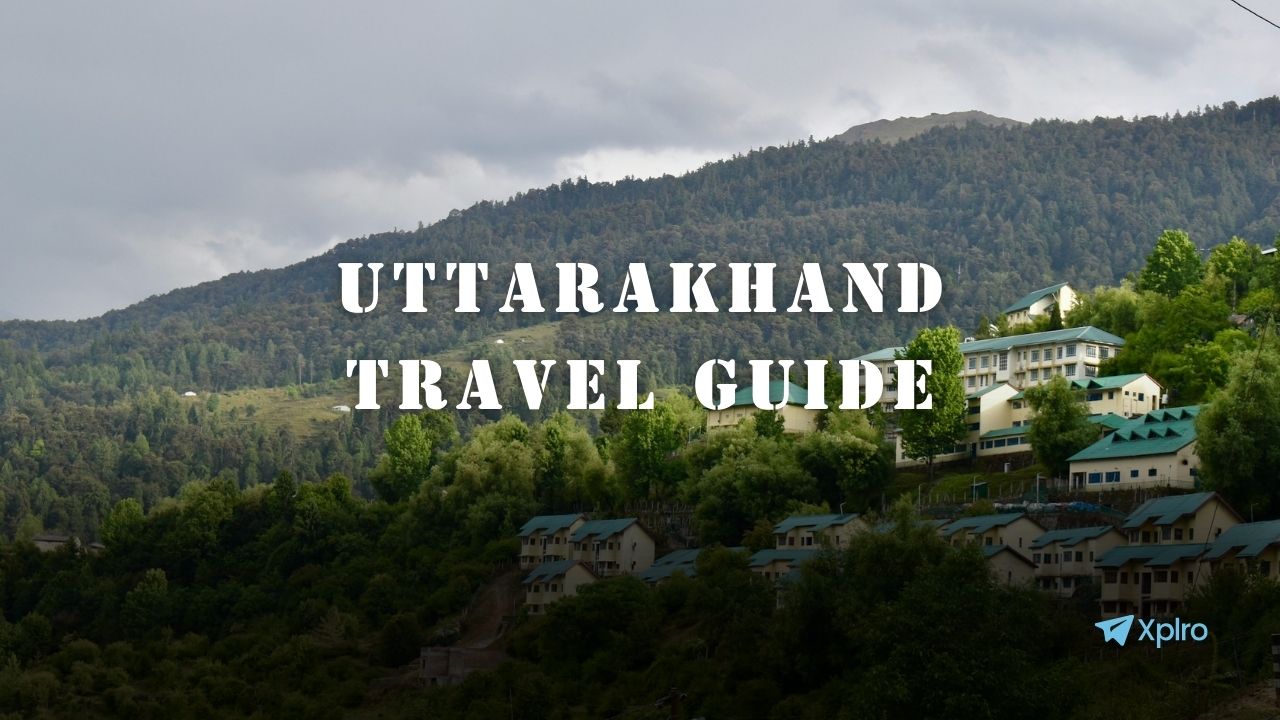Forget Instagram filters – Uttarakhand, India, is a raw, rugged canvas where wind whispers secrets through ancient pines, glaciers glitter like sun-kissed diamonds, and the Ganges roars with the untamed pulse of adventure. Every twist in the road unveils a fresh story, begging to be lived, not captured.
Nestled in the foothills of the mighty Himalayas, this diverse state is a tapestry woven with snow-capped peaks, lush valleys, sacred rivers, and a rich cultural heritage steeped in spirituality and adventure.
Join us as we explore the hidden gems, exhilarating activities, and soul-stirring experiences that await you in Uttarakhand. Let Xplro be your guide as you embark on a journey of discovery, where every turn unveils a new wonder and every experience etches itself into your heart.
Ready to answer the mountains’ call? Let’s dive in!
How to Reach Uttarakhand:
Here’s a guide to help you plan your journey:
Taking Flight:
Uttarakhand boasts two domestic airports:
- Jolly Grant Airport (DED) in Dehradun: This is the major airport, offering connectivity to major cities like Delhi, Bangalore, Mumbai, and Chennai.
- Pantnagar Airport (PGW) near Nainital: This airport primarily handles regional flights and has limited connectivity.
Traveling by Train:
Several trains connect various parts of India to Uttarakhand. Major railway stations include:
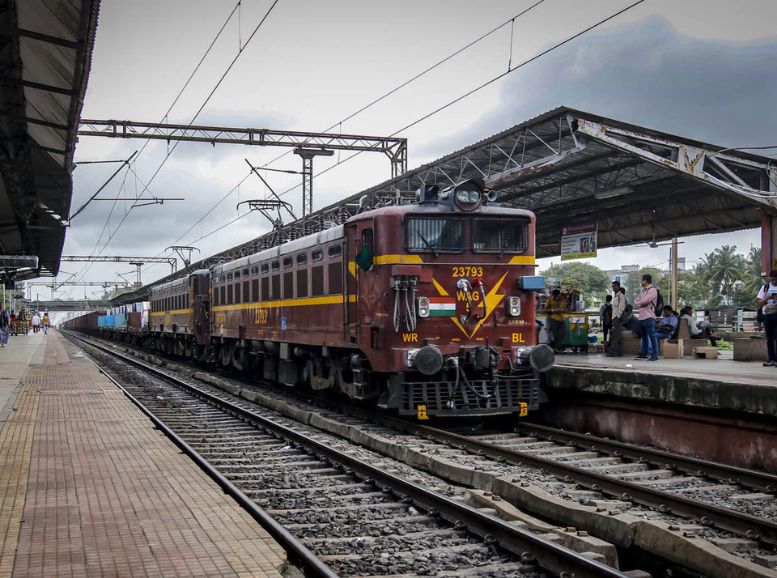
- Dehradun
- Haridwar
- Rishikesh
- Kathgodam (gateway to Nainital)
- Ranikhet
Popular train routes include:
- Delhi – Dehradun Shatabdi Express: This express train offers a comfortable journey from Delhi to Dehradun.
- Lucknow – Dehradun Express: This train connects Lucknow, the capital of Uttar Pradesh, to Dehradun.
- Howrah – Kathgodam Express: This train connects Howrah in West Bengal to Kathgodam, the starting point for the scenic toy train ride to Nainital.
Road Trip:
Uttarakhand boasts a well-maintained network of national highways and state roads, making it accessible by road. You can drive your own vehicle, hire a cab, or take a public bus. Popular routes include:
- Delhi – Haridwar: This well-maintained route offers a glimpse into the spiritual significance of the state.
- Chandigarh – Shimla – Nainital: This scenic route takes you through the charming hill stations of Himachal Pradesh and Uttarakhand.
- Lucknow – Bareilly – Nainital: This route offers a convenient connection from Lucknow to Nainital.
Best Time to Visit:
Here’s a breakdown to help you choose the perfect season for your Uttarakhand adventure:
For the Nature Enthusiast:
March to June (Spring & Summer): Spring paints the landscape with vibrant blooms, while summer offers pleasant temperatures and clear skies. This period is ideal for trekking, camping, and exploring the breathtaking natural beauty of the state. However, be mindful of occasional afternoon showers, especially towards the end of the season.
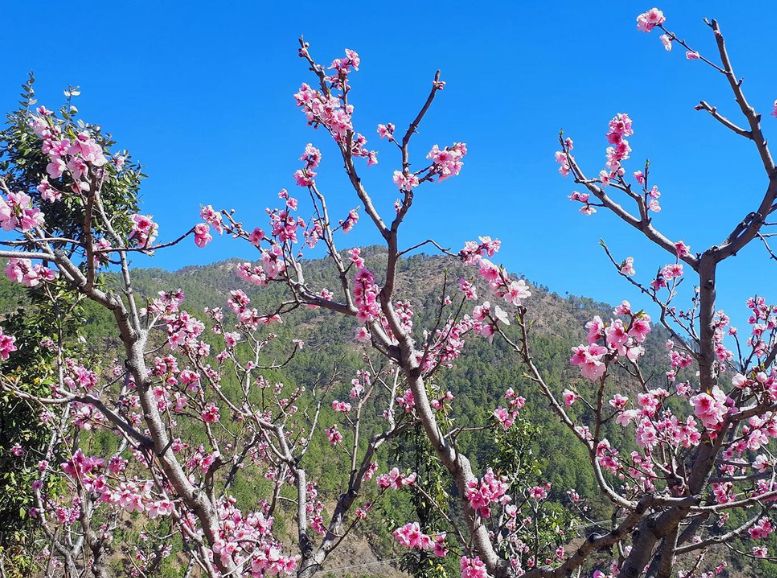
For the Adventure Seeker:
- September to November (Post-monsoon): After the refreshing monsoon washes, the skies become crystal clear, and the landscape boasts lush greenery. This period is considered ideal for adventure activities like white water rafting on the Ganges River, mountain biking, and exploring challenging treks like the Valley of Flowers trek.
For the Spiritual Seeker:
- Throughout the year: Uttarakhand is a haven for spiritual seekers, with renowned pilgrimage sites like Haridwar and Rishikesh attracting devotees year-round. However, the months of April-May and September-October witness major religious festivals like Char Dham Yatra and Kumbh Mela, attracting large crowds.
For the Winter Enthusiast:
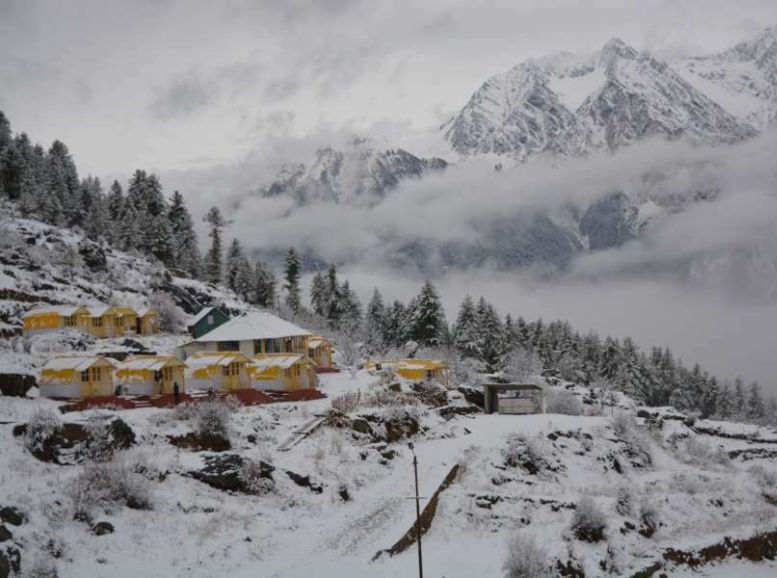
December to February (Winter): Winter transforms the higher regions of Uttarakhand into a winter wonderland, draped in a blanket of snow. This is the prime time for enjoying winter sports like skiing in Auli and experiencing the serene beauty of snow-clad peaks. However, be prepared for colder temperatures and potential road closures due to snowfall, especially in the higher regions.
For the Budget Traveler:
- July to August (Monsoon): While the monsoon season brings lush greenery and breathtaking waterfalls, it’s not ideal for all activities due to potential landslides and roadblocks. However, if you enjoy the scenic beauty of monsoon landscapes and prefer lower travel costs, this season might be an option. However, thorough research and planning are crucial due to weather uncertainties.
Must Visit Places:
Dehradun:

Dehradun, nestled in the verdant foothills of the Himalayas, is a charming blend of natural beauty, colonial architecture, and vibrant culture. Home to prestigious educational institutions, including the renowned Forest Research Institute, Dehradun exudes an intellectual aura. The city’s tranquil ambiance, flanked by picturesque hills and dense forests, offers a serene retreat for travelers seeking solace amidst nature’s bounty. From leisurely strolls along Rajpur Road to exploring the historic Robber’s Cave and the serene Tapkeshwar Temple, Dehradun captivates visitors with its diverse attractions.
Mussoorie:

Mussoorie, affectionately known as the “Queen of the Hills,” is a timeless gem nestled in the Garhwal Himalayas, captivating visitors with its ethereal beauty and old-world charm. Perched atop lush green hills, this enchanting hill station offers panoramic vistas of snow-capped peaks and verdant valleys, casting a spell of tranquility upon all who wander its winding paths. The Mall Road, adorned with colonial-era architecture and bustling with vibrant shops and eateries, serves as the heart of Mussoorie’s social fabric, where locals and tourists alike converge to savor the town’s unique ambiance. From the cascading waters of Kempty Falls to the scenic viewpoints of Gun Hill and Lal Tibba, each corner of Mussoorie reveals a new facet of its timeless allure.
Nainital:

Nainital, cradled amidst the Kumaon Hills like a shimmering jewel, is a paradise of tranquility and natural splendor. Its centerpiece, the emerald Naini Lake, reflects the surrounding hills like a mirror, captivating visitors with its serene beauty. The town’s charming Mall Road bustles with life, offering a delightful blend of local cuisine, handicrafts, and colonial-era architecture. From the iconic Naina Devi Temple overlooking the lake to the scenic viewpoints of Snow View and Tiffin Top, Nainital offers a myriad of experiences for the avid traveler. Whether boating on the tranquil waters of the lake or trekking through the verdant hills, every moment in Nainital is infused with the magic of its idyllic surroundings.
Jim Corbett National Park, Uttarakhand:

Jim Corbett National Park, cradled in the lap of the majestic Himalayas, is a haven for wildlife enthusiasts and nature lovers alike. Named after the legendary conservationist Jim Corbett, this oldest national park in India boasts a rich biodiversity, encompassing dense forests, grasslands, and meandering rivers. Home to the endangered Bengal tiger, along with a myriad of other wildlife species such as elephants, leopards, and deer, Corbett offers unparalleled opportunities for wildlife sightings and photography. Beyond its wildlife treasures, the park’s serene ambiance and scenic landscapes make it a perfect retreat for those seeking solace amidst nature’s embrace.
Valley of Flowers National Park:

Nestled in the breathtaking expanses of the Western Himalayas, the Valley of Flowers National Park is a botanical wonderland that enchants visitors with its kaleidoscope of colors and ethereal beauty. Recognized as a UNESCO World Heritage Site, this pristine valley blooms with a diverse array of alpine flowers, painting the landscape with hues of pink, purple, yellow, and blue during the monsoon season. Amidst the carpet of blossoms, rare and endemic plant species thrive, creating a botanical paradise unlike any other. Trekking through the gentle meadows and lush forests, visitors encounter cascading waterfalls, glistening streams, and panoramic vistas of snow-capped peaks, immersing themselves in the tranquil ambiance of nature’s bounty.
Auli:

Perched atop the lofty heights of the Garhwal Himalayas, Auli in Uttarakhand stands as a pristine jewel of winter wonderland and serene beauty. Renowned as one of India’s premier skiing destinations, Auli welcomes enthusiasts and adventurers alike to its snow-covered slopes, offering exhilarating experiences against the backdrop of majestic peaks. But beyond its fame as a skiing paradise, Auli unveils its charm throughout the year, captivating visitors with panoramic vistas of oak and coniferous forests, dotted with vibrant alpine flowers in the warmer months. The cable car ride from Joshimath to Auli treats travelers to breathtaking views of the Nanda Devi, Mana Parvat, and Kamat Kamet peaks, evoking a sense of awe and wonder.
Chopta:

Nestled amidst the serene landscapes of Uttarakhand, Chopta emerges as a hidden gem for nature lovers and adventure seekers alike. Often referred to as the “Mini Switzerland of India,” this picturesque hill station enchants visitors with its pristine beauty, lush green meadows, and panoramic views of snow-capped peaks. Serving as the base for treks to the revered Tungnath Temple and Chandrashila Peak, Chopta offers an exhilarating journey through dense forests and alpine meadows, culminating in awe-inspiring vistas of the Himalayas. Beyond its trekking trails, Chopta’s tranquil ambiance and crisp mountain air provide the perfect setting for meditation, yoga, and rejuvenation of the mind and soul.
Kusani:

Nestled amidst the tranquil embrace of the Kumaon Himalayas, Kausani stands as a serene sanctuary for seekers of natural beauty and spiritual solace. Revered as the “Switzerland of India,” this quaint hill station captivates visitors with its panoramic vistas of snow-capped peaks, including the majestic Nanda Devi, Trishul, and Nanda Ghunti. The gentle slopes of Kausani are adorned with verdant tea gardens, offering a tranquil setting for leisurely strolls and moments of introspection. Renowned for its spectacular sunsets, Kausani’s clear skies are painted with hues of orange and crimson, casting a spellbinding aura over the landscape.
Ranikhet:
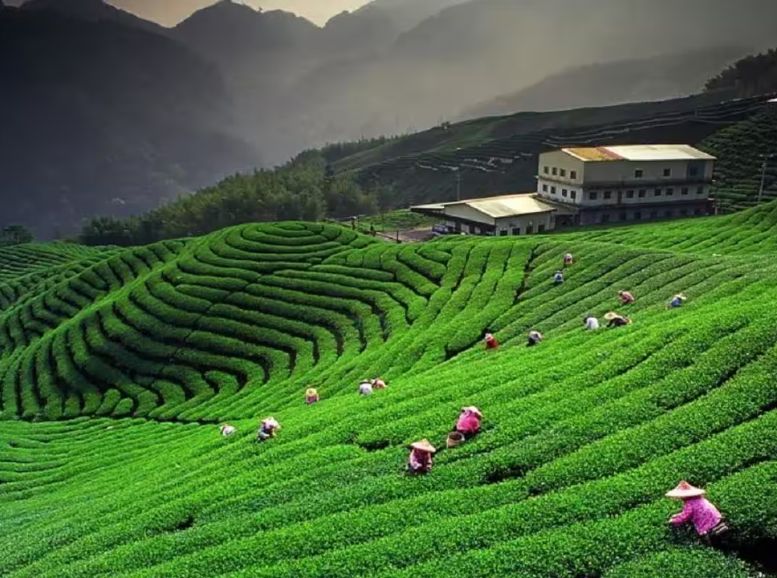
Translating to “Queen’s Meadow,” Ranikhet is a picturesque hill station nestled amidst verdant forests and rolling meadows. Its idyllic setting, coupled with panoramic views of the Himalayan peaks, makes it a perfect retreat for nature lovers and peace seekers. Visitors can explore attractions like the Jhula Devi Temple, dedicated to the goddess Durga, or indulge in leisurely walks amidst pine-scented forests, soaking in the serenity of this Himalayan paradise.
Rishikesh:
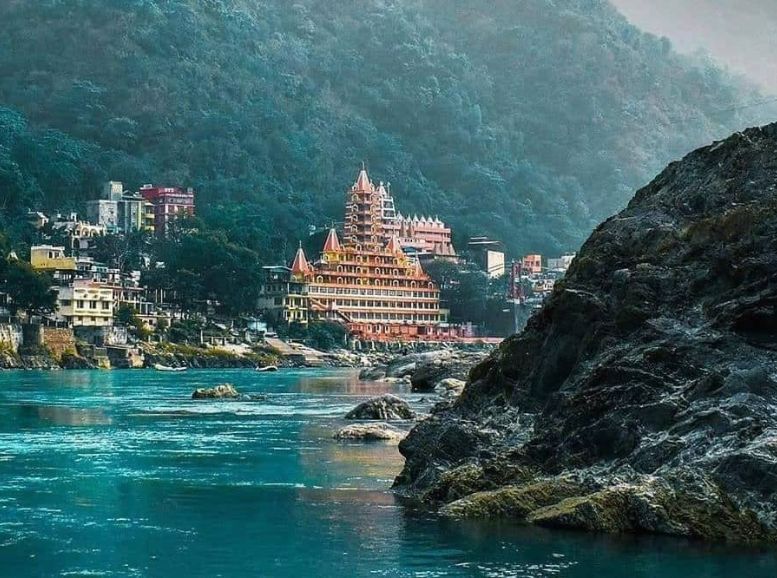
Nestled along the banks of the Ganges River, Rishikesh is a spiritual haven known for its serene ashrams, yoga retreats, and vibrant cultural scene. Visitors flock here to seek inner peace through meditation, attend soul-stirring Ganga Aarti ceremonies, and partake in thrilling adventure sports like river rafting and bungee jumping.
Haridwar:
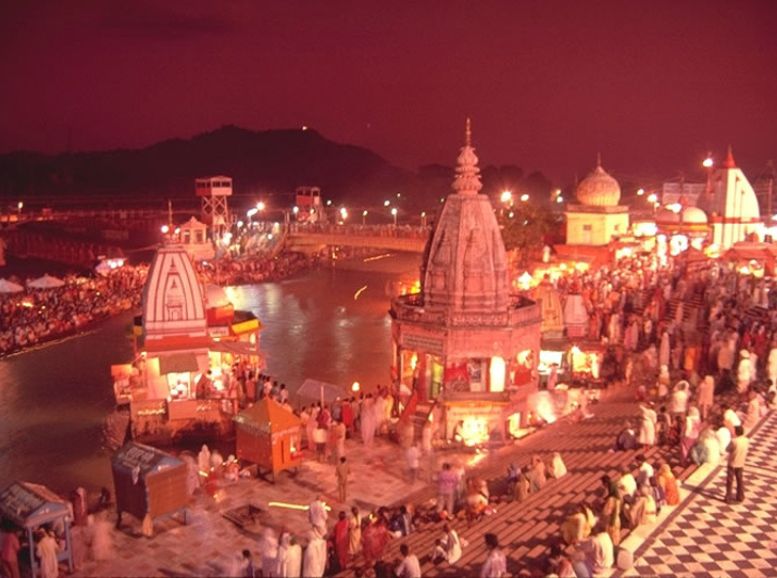
As one of the holiest cities in India, Haridwar holds a special place in the hearts of pilgrims and seekers alike. Its ancient temples, including the revered Har Ki Pauri and Mansa Devi Temple, draw devotees from far and wide to perform sacred rituals and witness the mesmerizing Ganga Aarti rituals on the ghats.
Binsar:
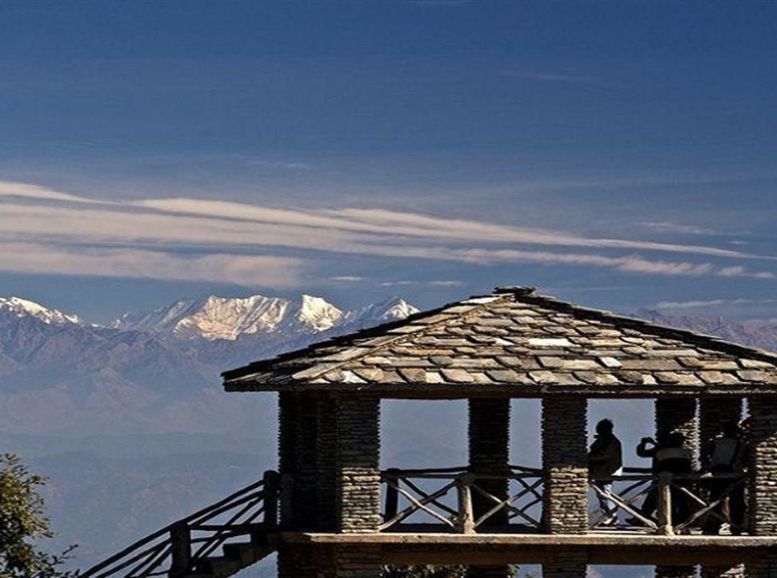
Perched at an altitude of 7,900 feet in the Kumaon Himalayas, Binsar is a serene hill station known for its panoramic views of the Himalayan peaks, dense oak and rhododendron forests, and rich biodiversity. The Binsar Wildlife Sanctuary, home to rare species of flora and fauna, offers opportunities for wildlife safaris and birdwatching amidst the tranquil surroundings.
Almora:
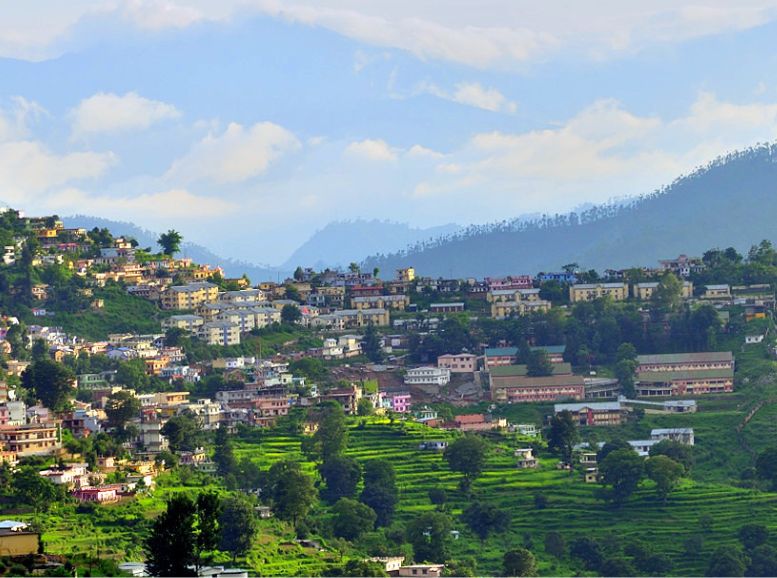
Nestled in the lap of the Kumaon hills, Almora is a quaint hill station steeped in history and natural beauty. Its narrow lanes, adorned with colonial-era buildings and bustling markets, offer a glimpse into its rich cultural heritage. Visitors can explore ancient temples like the Nanda Devi and Kasar Devi temples, known for their spiritual significance and architectural splendor, or simply soak in the panoramic views of the snow-capped Himalayas from vantage points like Bright End Corner and Zero Point.
Badrinath:
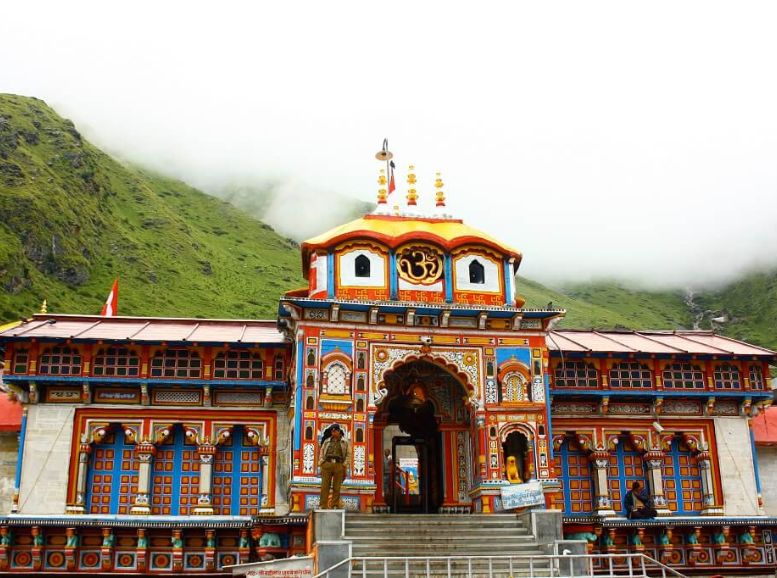
Situated in the lap of the Himalayas, Badrinath is one of the Char Dham pilgrimage sites and holds immense religious significance for Hindus. The town is home to the revered Badrinath Temple, dedicated to Lord Vishnu, and attracts devotees from across the globe seeking blessings and spiritual enlightenment. Surrounded by snow-capped peaks and pristine natural beauty, Badrinath offers a serene and spiritual retreat amidst the majestic Himalayas.
Gangotri:
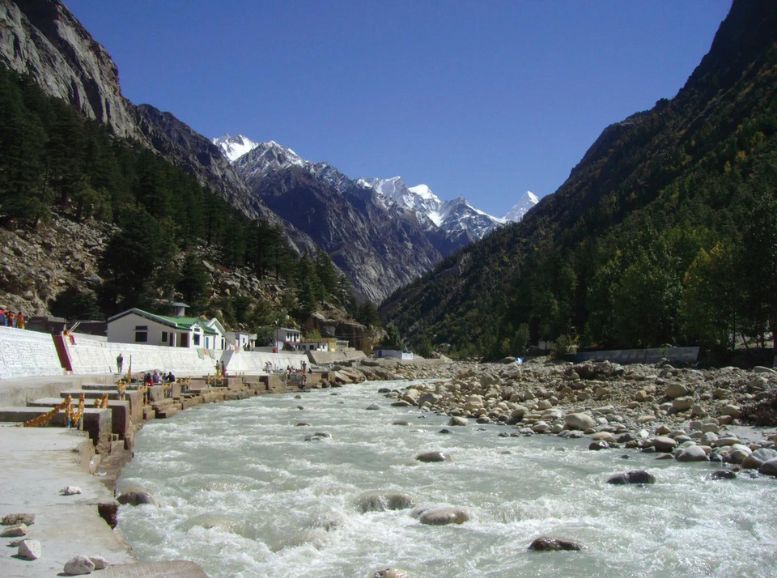
Nestled in the Garhwal Himalayas, Gangotri is a sacred town and pilgrimage site revered as the source of the holy River Ganges. The town is home to the historic Gangotri Temple, dedicated to Goddess Ganga, where pilgrims offer prayers and seek blessings. Surrounded by towering peaks and pristine landscapes, Gangotri is not only a place of religious significance but also a haven for nature lovers and adventure enthusiasts.
Yamunotri:
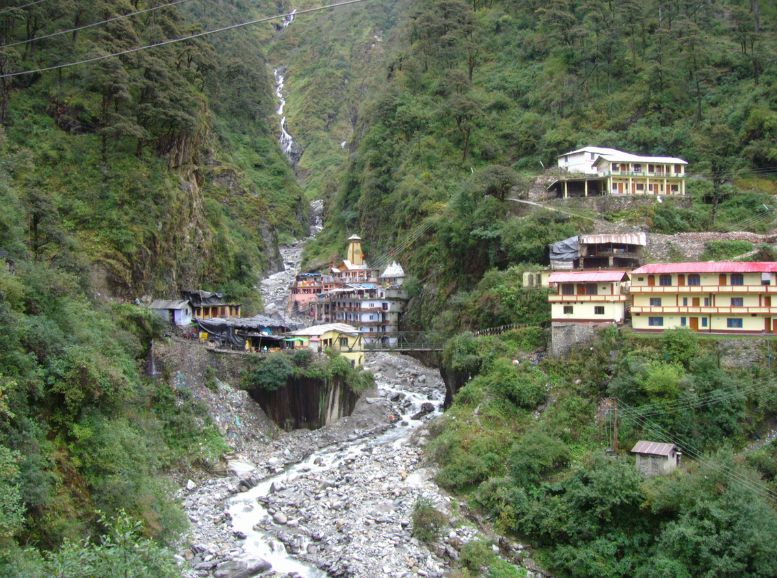
Located in the Uttarkashi district of Uttarakhand, Yamunotri is another revered pilgrimage site nestled amidst the Garhwal Himalayas. It is the source of the holy River Yamuna and is home to the Yamunotri Temple, dedicated to Goddess Yamuna. Pilgrims embark on a challenging trek to reach the temple and offer prayers amidst the serene surroundings of snow-capped peaks and lush green valleys.
Hemkund Sahib:
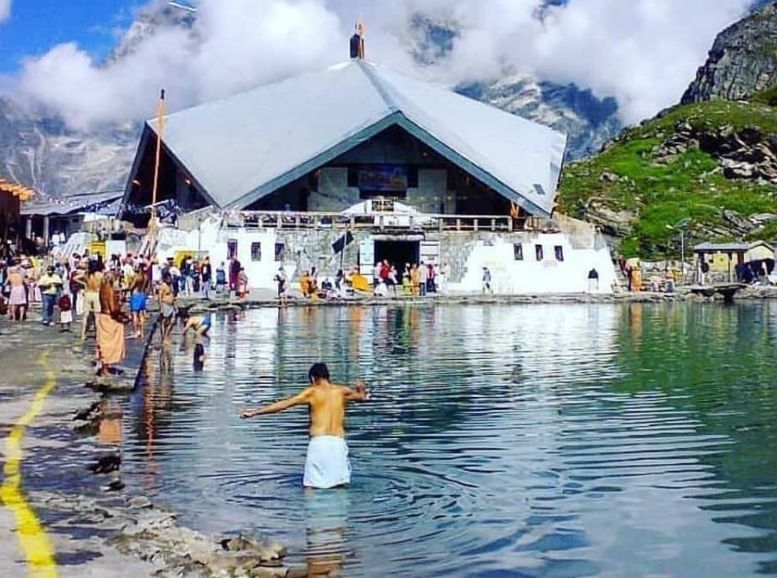
Situated at an altitude of over 15,000 feet in the Chamoli district, Hemkund Sahib is a sacred Sikh pilgrimage site nestled amidst the Himalayas. It is home to the revered Hemkund Sahib Gurudwara, surrounded by pristine glacial lakes and towering peaks. Pilgrims undertake a challenging trek to reach Hemkund Sahib and seek spiritual solace in the tranquil ambiance of this sacred site.
Munsiyari:
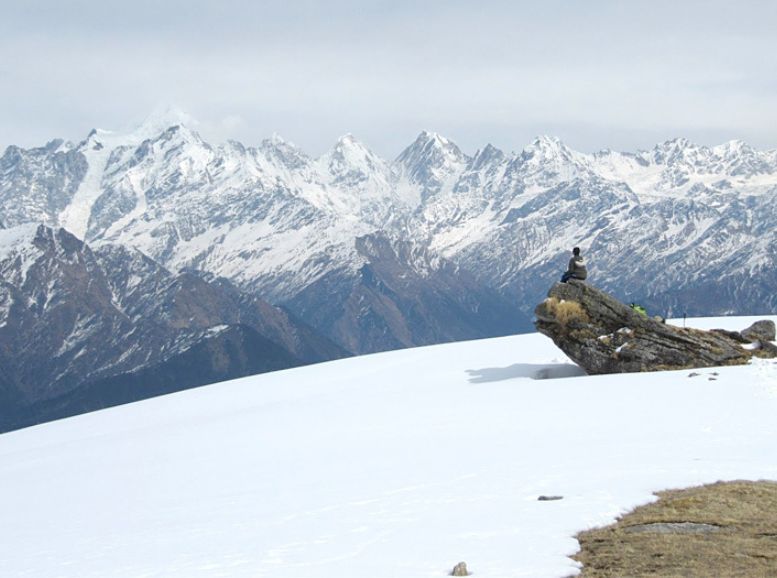
Tucked away in the remote corners of the Kumaon region, Munsiyari is a hidden gem renowned for its breathtaking landscapes and panoramic views of the Himalayas. It serves as the base camp for treks to Milam Glacier, Nanda Devi, and other high-altitude Himalayan peaks. Visitors can explore picturesque villages, interact with the local communities, and immerse themselves in the raw beauty of nature, making Munsiyari a paradise for adventure seekers and nature enthusiasts alike.
Chaukori:
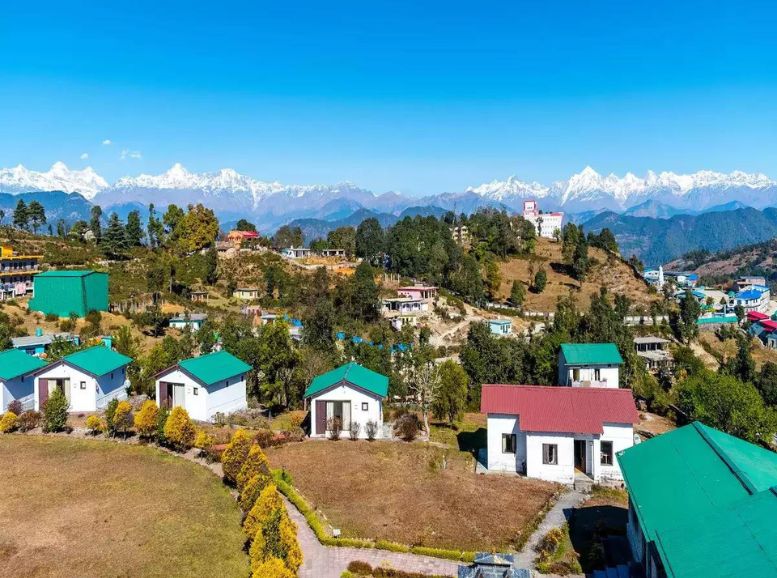
Perched at an altitude of 6,000 feet in the Kumaon region, Chaukori is a tranquil hill station renowned for its tea gardens, panoramic views, and serene ambiance. The town offers uninterrupted vistas of the Himalayan peaks, including Nanda Devi, Trishul, and Panchachuli, making it a haven for nature lovers and solitude seekers. Visitors can stroll through the lush green tea estates, savoring the aroma of fresh tea leaves, or simply unwind amidst the tranquility of nature, far away from the hustle and bustle of city life.
Rudraprayag:
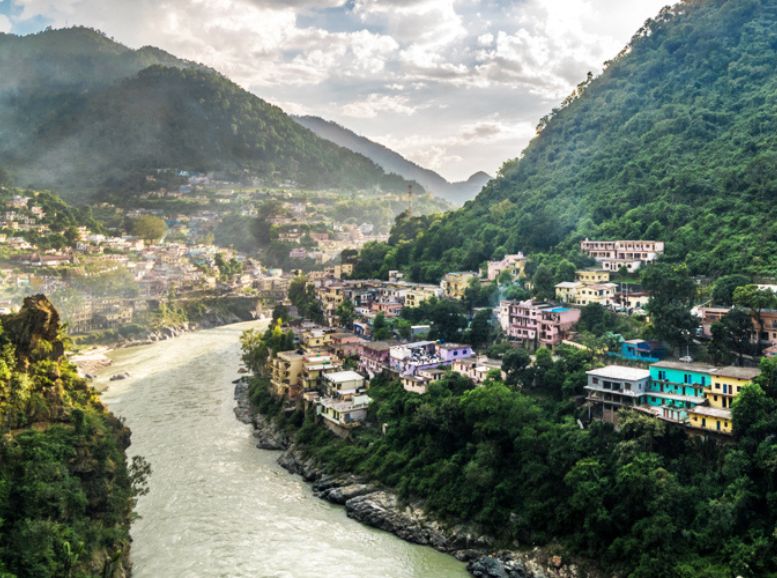
Situated at the confluence of the Alaknanda and Mandakini rivers, Rudraprayag is a sacred town revered as the gateway to the Char Dham pilgrimage circuit. The town is home to several ancient temples, including the Rudranath Temple and Chamunda Devi Temple, attracting devotees and spiritual seekers from far and wide. Visitors can soak in the spiritual vibes of the town, offering prayers amidst the serene surroundings of the Himalayas, or embark on treks to nearby scenic spots like Kedarnath and Badrinath.
Pithoragarh:
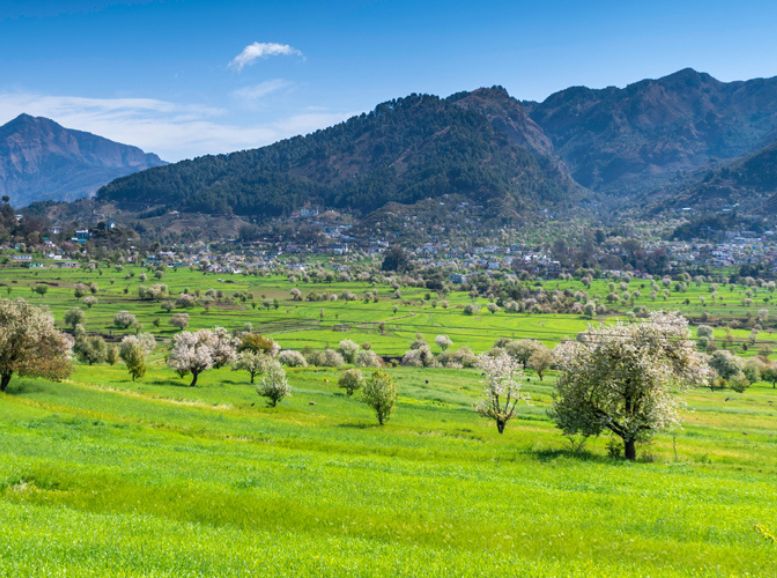
Nestled amidst the eastern Himalayas, Pithoragarh is a picturesque town known for its breathtaking vistas, ancient temples, and rich cultural heritage. The town offers panoramic views of snow-capped peaks like Nanda Devi and Nanda Kot, making it a favorite destination for nature lovers and photographers. Visitors can explore historical sites such as the Pithoragarh Fort, adorned with intricate carvings and architectural marvels, or embark on treks to nearby scenic spots like Chandak and Dharchula.
Adventures and Activities:
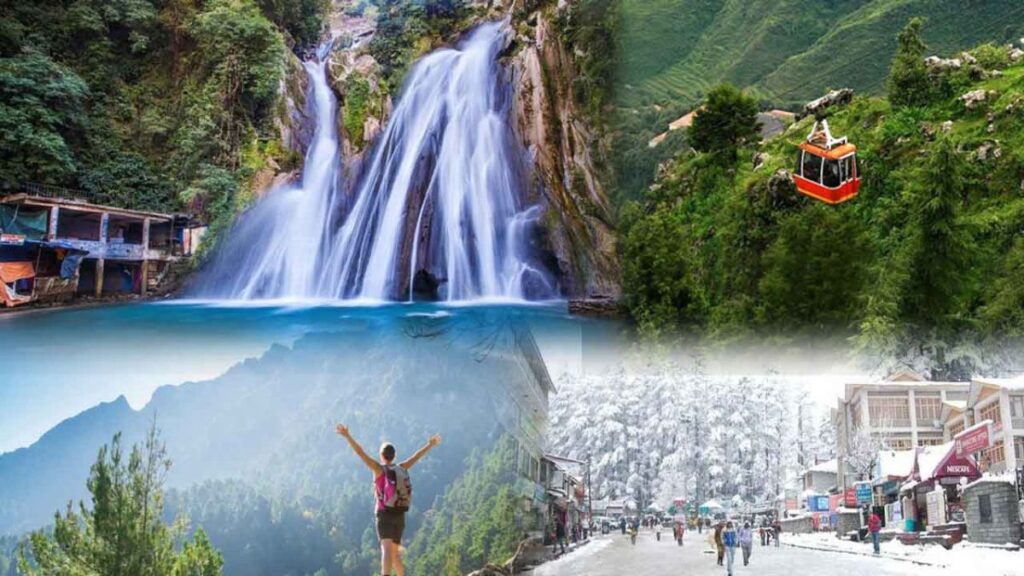
- Trekking: Conquer the challenging trails of the Himalayas, including the Gangotri, Yamunotri, and Valley of Flowers treks.
- Rafting: Experience the adrenaline rush of rafting on the mighty Ganges River.
- Paragliding: Soar above the valleys and witness breathtaking panoramic views.
- Ziplining: Test your nerves and enjoy an exhilarating ride through the forests.
- Camping: Connect with nature and stargaze under the clear Himalayan skies.
- Yoga and Meditation: Retreat to serene ashrams and rejuvenate your mind, body, and spirit.
Beyond Sightseeing:
- Binsar Wildlife Sanctuary: Escape into the wilderness and spot diverse flora and fauna, including the elusive leopard.
- Kumaoni Villages: Experience authentic village life and immerse yourself in local culture.
- Tehri Dam: Marvel at the engineering marvel and witness the vast reservoir.
- Learn traditional cooking techniques in a Garhwali village.
- Attend a vibrant Holi celebration in Kumaon, painted in colors of joy.
- Witness the unique Teej festival, where women swing on swings amidst joyous singing and dancing.
Foodie Delights:

Introducing the Cuisine: Uttarakhand’s cuisine is a symphony of flavors, influenced by its diverse geography and cultures. Expect hearty dishes, fresh local produce, and unique cooking methods that reflect the mountain lifestyle.
Best Picks:
- Kumaoni Thali: Imagine a vibrant feast for the senses. Spicy aloo gutke (poached potatoes) tantalize your taste buds, while earthy bhatt ki churkani (roasted buckwheat) offers a nutty counterpoint. Gahat dal (horsegram), rich and protein-packed, mingles with the vibrant green palya (spinach). And, to top it all off, a creamy ramdana kheer (amaranth pudding) leaves a sweet, nutty finish. This thali isn’t just a meal; it’s a warm embrace of Kumaoni hospitality, served on a platter of tradition.
- Momos: These Tibetan dumplings arrive steaming hot, plump with juicy fillings. Choose from classic veg or meat options, each bursting with savory spices. Dip them in the fiery red chutney for a kick, or try the creamy, cilantro-laced green chutney for a refreshing balance. Affordable and ubiquitous, momos are the perfect fuel for your Uttarakhand adventures, whether you’re conquering a mountain trail or exploring bustling markets.
- Badi ki Sabzi: This simple yet soul-warming dish showcases the humble badi, sun-dried lentil dumplings. Simmered in a delicately spiced tomato gravy, the badis soak up the flavor, becoming soft and bursting with a rich umami taste. Pair it with steaming hot rotis or fluffy rice, and feel the comfort of a home-cooked meal wash over you. Badi ki Sabzi is a testament to the resourcefulness of Kumaoni cuisine, transforming everyday ingredients into a satisfying and hearty treat.
- Aloo Poori: For a quick and delicious bite, look no further than aloo poori. Crispy, deep-fried puris (puffed flatbreads) hold a spicy potato filling, creating a perfect medley of textures and flavors. The contrast between the golden, flakey exterior and the soft, spicy potato mash is irresistible. Enjoy aloo poori as a street food snack, a light breakfast, or even a comforting side dish. It’s a true celebration of simple pleasures, found all over Uttarakhand.
Must-Try Local Experiences:
Haridwar Street Food Trail:

Immerse yourself in the vibrant chaos of Haridwar’s bustling streets, where every corner boasts a culinary adventure. Sample piping hot jalebis, savor crispy samosas, and indulge in creamy lassi. Don’t be afraid to try the local favorites like chhole bhature (chickpea curry with fried bread) and pav bhaji (vegetable curry with bread). With friendly vendors and countless options, this street food trail is a feast for the senses and a delicious way to connect with the local culture.
Cooking Class in a Garhwali Village:

Step into a humble Garhwali kitchen and learn the secrets of traditional cooking. Under the warm guidance of a local family, you’ll grind spices, chop vegetables, and master the art of grilling over an open fire. From fluffy rotis to fragrant curries, you’ll learn to create authentic dishes that reflect the warmth and simplicity of Garhwali cuisine. More than just a cooking class, this experience is a window into the heart and soul of Uttarakhand, leaving you with lasting memories and a newfound appreciation for this unique culinary heritage.
Remember, these are just a few starting points. With its diverse landscapes, rich culture, and vibrant flavors, Uttarakhand offers endless possibilities for exploration and discovery. So, pack your bags, lace up your shoes, and embark on your own unforgettable adventure in this magical land. Let Xplro be your guide as you unveil the raw magic of Uttarakhand, one experience at a time.
Safety tips:
- Weather Awareness: Monitor weather forecasts, especially during monsoon season, to avoid risks of landslides and flash floods.
- Altitude Sickness: Gradually acclimatize to high altitudes, stay hydrated, and recognize symptoms of altitude sickness.
- Road Caution: Exercise caution on mountain roads, adhere to speed limits, and consider hiring experienced local drivers.
- Trekking Precautions: Prepare adequately for treks with proper gear, supplies, and local guides to ensure safety.
- Wildlife Awareness: Be cautious of wildlife encounters in forested areas and follow designated trails to avoid conflicts.
- Healthcare Preparedness: Carry essential medications, first aid kits, and health insurance coverage for emergencies.
- Cultural Respect: Respect local customs, traditions, and religious practices to foster positive interactions with communities.
- Environmental Responsibility: Minimize environmental impact by avoiding single-use plastics and disposing of waste responsibly.
Travel tips:
- Preparation is Key: Research and plan your trip well in advance, taking into account factors such as weather conditions, available activities, and accommodation options.
- Pack Wisely: Pack light, focusing on essential items like comfortable clothing, sturdy footwear, sunscreen, insect repellent, and a basic first aid kit.
- Stay Informed about Weather: Keep yourself updated with the latest weather forecasts, especially if you’re heading to mountainous regions, to avoid any unexpected weather-related challenges.
- Adapt to Altitude: If you’re traveling to high-altitude areas, take time to acclimatize gradually to prevent altitude sickness. Stay hydrated, avoid alcohol, and be mindful of any symptoms you may experience.
- Hydration is Key: Carry a reusable water bottle and make sure to stay hydrated throughout your journey, particularly during outdoor activities and treks.
- Respect Local Customs: Show respect for local customs, traditions, and religious sites. Dress modestly, seek permission before taking photos, and be considerate of cultural sensitivities.
Transportation:
Transportation in Uttarakhand comprises a well-developed network of roadways, railways, and airways, facilitating connectivity within the state and beyond. The Uttarakhand Transport Corporation (UTC) operates buses on intra-state and inter-state routes, complemented by private taxis and cabs. Major railway stations like Dehradun and Haridwar connect Uttarakhand to cities nationwide. The state is served by domestic airports at Dehradun, Pantnagar, and Pithoragarh, with Jolly Grant Airport being the primary hub. Local transport options include auto-rickshaws, cycle-rickshaws, and tempos, while cable cars and ropeways offer scenic rides in hill stations.
Conclusion
Uttarakhand is a land of unparalleled beauty, rich culture, and spiritual significance. From the snow-capped peaks of the Himalayas to the lush greenery of its valleys and the sacred rivers that flow through its heart, every corner of this enchanting state is steeped in natural splendor and mystique. Follow Xplro for more and thanks for visiting us
FAQs for Uttarakhand:
1. What are the popular tourist destinations in Uttarakhand?
- Uttarakhand is known for its scenic beauty and spiritual sites. Popular destinations include Rishikesh, Haridwar, Dehradun, Mussoorie, Nainital, Jim Corbett National Park, and the Char Dham pilgrimage sites.
2. What is the best time to visit Uttarakhand?
- The best time to visit Uttarakhand depends on your interests. Summer (March to June) is ideal for sightseeing and adventure activities, while winter (October to February) offers snowfall in higher altitudes, perfect for snow sports enthusiasts.
3. What adventure activities can I do in Uttarakhand?
- Uttarakhand offers a range of adventure activities such as trekking, white-water rafting, camping, paragliding, skiing, and wildlife safaris. Options vary based on the destination and season.
4. How can I reach Uttarakhand?
- Uttarakhand is well-connected by road, rail, and air. Major cities like Dehradun and Kathgodam have railway stations, and Jolly Grant Airport in Dehradun serves as the primary airport for domestic flights.
5. What are the famous pilgrimage sites in Uttarakhand?
- Uttarakhand is known as “Dev Bhoomi” or Land of Gods due to its numerous sacred sites. Some famous pilgrimage destinations include the Char Dham (Yamunotri, Gangotri, Kedarnath, and Badrinath), Hemkund Sahib, and Panch Kedar.
6. What precautions should I take while trekking in Uttarakhand?
- While trekking in Uttarakhand, it’s essential to acclimatize to the altitude, stay hydrated, follow designated trails, carry essential gear, and hire experienced guides for remote treks. Weather conditions can change rapidly, so be prepared.
7. Are there any wildlife sanctuaries or national parks in Uttarakhand?
- Yes, Uttarakhand is home to several wildlife sanctuaries and national parks, including Jim Corbett National Park, Rajaji National Park, Nanda Devi National Park, and Valley of Flowers National Park, offering opportunities for wildlife safaris and birdwatching.
8. What are the local cuisines and food specialties of Uttarakhand?
- Traditional Uttarakhandi cuisine includes dishes like Kafuli, Bhatt ki Churkani, Aloo Ke Gutke, and Bal Mithai. Don’t miss trying local delicacies and sweets made from locally sourced ingredients.
9. Can I visit Uttarakhand during the monsoon season?
- While the monsoon season (July to September) brings heavy rainfall and landslides to certain areas of Uttarakhand, it’s still possible to visit destinations like Valley of Flowers and enjoy the lush greenery. However, exercise caution and check weather forecasts before traveling.
10. Are there any eco-friendly accommodations or homestays in Uttarakhand?
- Yes, Uttarakhand offers eco-friendly accommodations and homestays in various locations, allowing travelers to experience local culture while minimizing their environmental impact. Research eco-friendly options or look for accommodations certified by sustainable tourism organizations.
11. What are the COVID-19 travel guidelines for visiting Uttarakhand?
- Before planning your trip, check the latest COVID-19 travel guidelines issued by the government of Uttarakhand. This includes information on entry requirements, quarantine regulations (if any), and safety protocols to follow during your visit.
12. Can I witness any festivals or cultural events during my visit to Uttarakhand?
- Yes, Uttarakhand celebrates various festivals and cultural events throughout the year. Some notable festivals include the Kumbh Mela in Haridwar, Uttarayani Festival in Kumaon, and Nanda Devi Raj Jat Yatra. Check the event calendar to align your visit with cultural celebrations.
13. What are some lesser-known offbeat destinations to explore in Uttarakhand?
- Apart from popular tourist spots, Uttarakhand has hidden gems like Chopta, Munsiyari, Lansdowne, Auli, and Pangot, offering serene landscapes, lesser-crowded trails, and unique experiences for travelers seeking offbeat destinations.
14. Are there any restrictions on photography or videography at religious sites in Uttarakhand?
- While photography and videography are generally allowed at most religious sites in Uttarakhand, it’s advisable to respect local customs and seek permission before capturing images, especially in sensitive areas or during religious ceremonies.
15. What are the transportation options for traveling within Uttarakhand?
- Uttarakhand offers various transportation options including buses, shared taxis, rental cars, and private taxis for traveling between cities and tourist destinations. Additionally, many hill stations and remote areas can be explored on foot or by hiring local guides for trekking or hiking expeditions.


